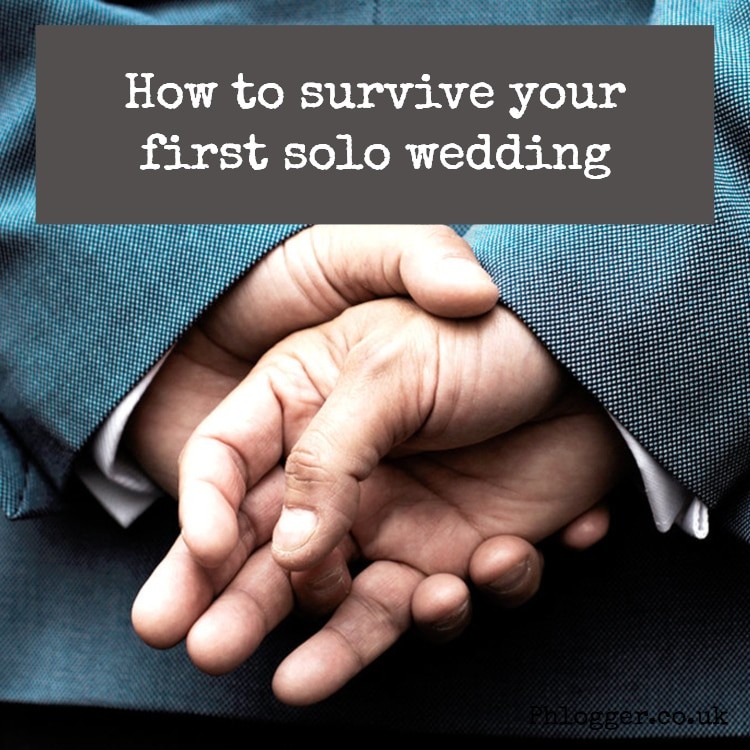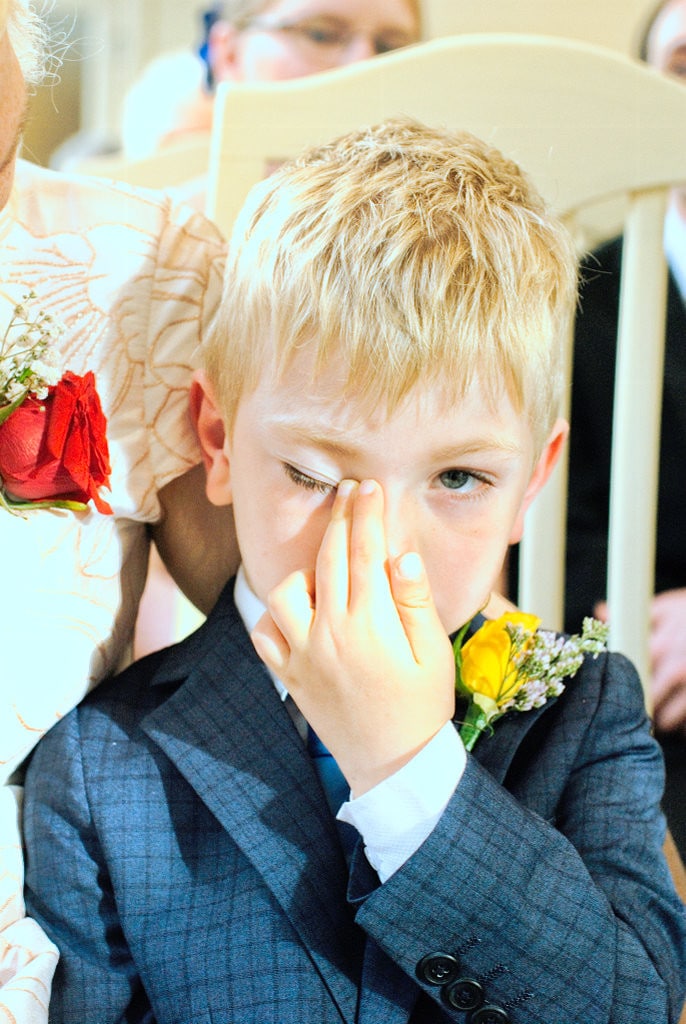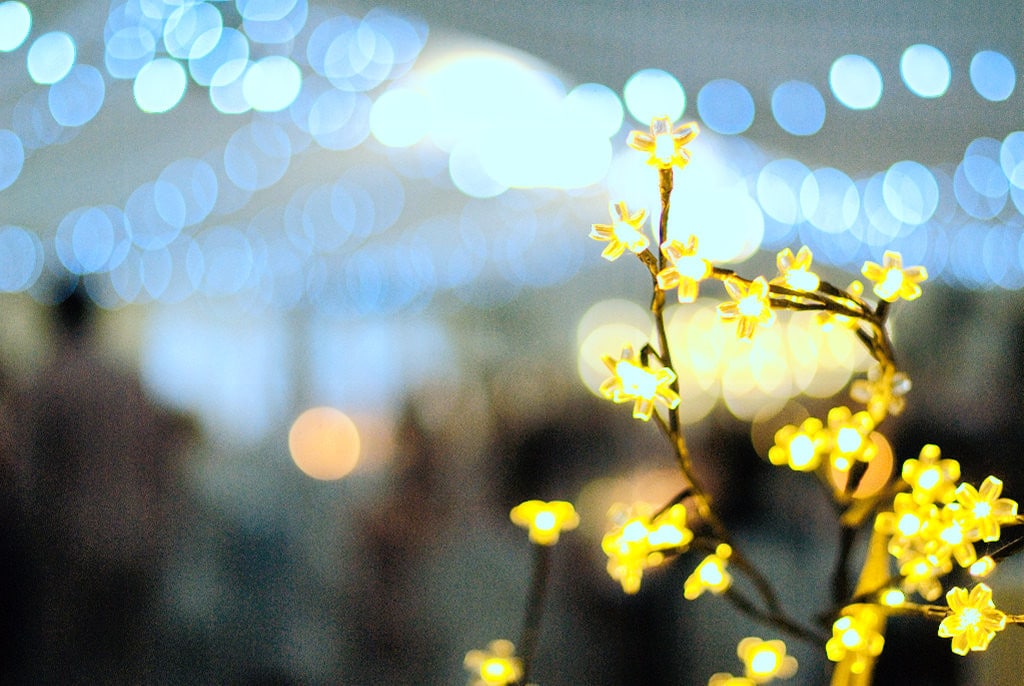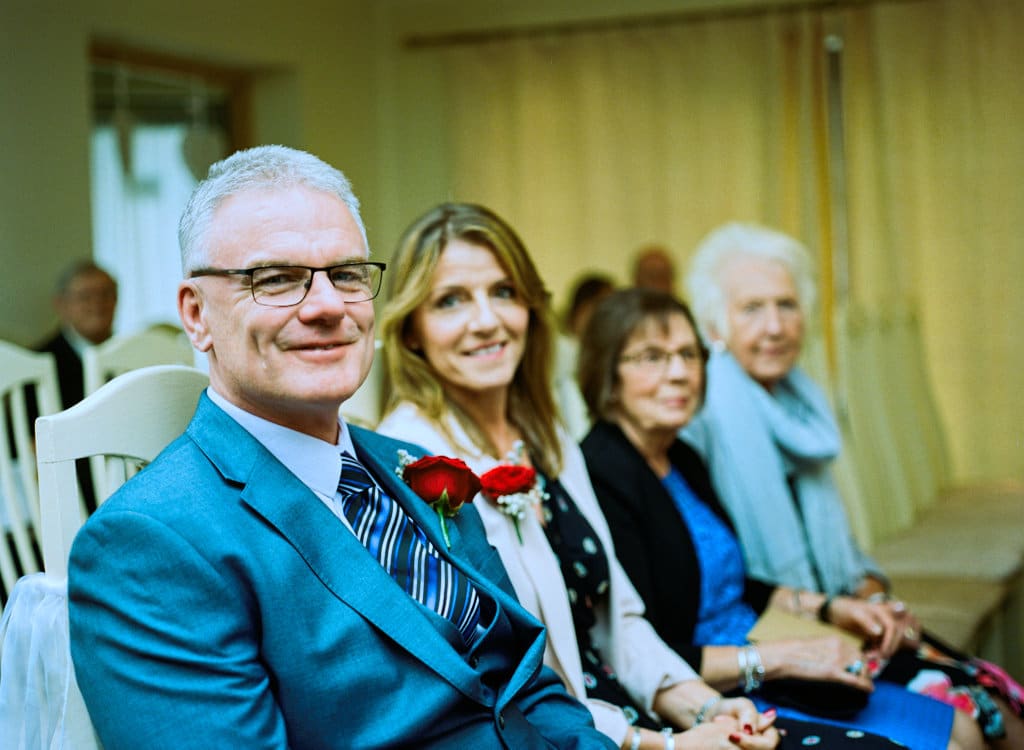How to survive your first solo wedding

So many people get to that point where they wonder about the field of wedding photography. For must of us amateurs it seems to be the only income source for photography. The solution is always the same you have to try it to know you can do it, but obviously it’s a vary scary thought. You know there are no second chances, its not a landscape you can come back to at any point.
The fear factor is definately there for most of us, but there are steps to help you with this. Having shot a couple of times as a second shooter this provides you with a real insight of what is to come and is so useful.
In this article we try and help you prepare for that first wedding.
Preparation
You cannot stress how important preparation is to any photography event. By preparing yourself, you are increasing the chances of success and delivering a good product to your client. It is never going to be easy to prepare since it’s your first go. However, look over these few reasons as a guide:
- gear
- venue
- the couple
- delivery
- timing
Let’s go through these points one at a time to see why there are important.
Gear
There are a few points here to think about, from knowing your gear to also what you should take to the event. In the case of my shoot, the equipment choice was clear from the start. Speaking with the bride, the idea was to also shoot film along with digital. This was important so they know there would be different cameras and a delay with some of the pictures.
Knowing the equipment is important too, especially with analogue and old equipment as you will be changing film. It is also worth noting you can have failure as the cameras are very old.
For this shoot, a lens (50mm f1.4) and flash triggers were loaned from a friend. Having practised a couple of years with a 50mm this would help my workflow and obtain shots throughout the afternoon.
Choosing the appropriate equipment is important too, you may need your wide angle if there a lot of guests or a tight space to work in. You may also need additional lighting (flash) for those darker rooms. In really dark environments you can shoot high iso (if you have a modern camera) otherwise a tripod might work (if it doesn’t get in the way of guests).
Here is a summary of what I took:
- Bronica ETRS medium format film camera + 50m +105mm lenses
- Olympus om2n 35mm film camera +50mm f1.8 lens
- Nikon d200 + 17-35mm pro lens + 50mm f1.4 (borrowed)
- Olympus em10 mirrorless camera + kit lens (purely for backup)
- Yongnuo flash + trigger/receiver
- 5-in-1 reflector
- Softbox + stand
Venue
The location is crucial for planning your journey and travel time. Arriving early allows you to walk around the place and test locations. If you are shooting film it’s useful for measuring light – which saves a lot of hassle. Knowing the shadows and light for each room means you will be confident and can adapt quickly.
Having a place to store your equipment could be handy, especially for charging batteries. This means you don’t have to go back to your car to pick up equipment.
The layout of the place will also allow you to know how long it takes to get around, as some weddings take place across multiple sites!
[metaslider id=”11337″]
The couple
Getting to know the bride and groom is essential, you are working for them and need to deliver. It’s useful to try and learn what they expect from the day. They may have ideas or have trust in you.
During my wedding, the meeting with them proved useful as there may be mobility issues with the bride. We knew she would try her best to stand all day, but it was suggested to bear this in mind. So planning where to take their individual shots was important, but also to shoot these at the same time.
Another point was raised was the bride would not pose in a certain way (for reasons that are private). This would be a constraint, but it was important not to cause any distress or issues for the bride.
Delivery
You might wonder what I mean about this, but I’m referring to the end product – the images. During the meet up with the couple, we discussed what photos and group shots they wanted and they knew film was to be shot. But, this subject went to the back of my mind, as the wedding itself was coming up and at the forefront. But in essence during the meeting we should have agreed:
- how many shots would be delivered
- how the images would be delivered (download/cd/USB etc)
- what about social media
- how long would it take to edit
- how they would be billed
It is so important to get this paperwork and contractual part done. My wedding had a very laid back attitude to the images and wanted me to be relaxed and enjoy the day. It was so nice of them and great in theory, but you still need to deliver, you only get one chance at this.
After delivering photos to the couple via a link (used pixieset cloud software), we found ourselves messaging each other and meeting up again. These discussions were all about when can the work be shared, which images would be suitable etc. But since the original proposal was for an hour of shooting, it didn’t seem feasible to arrange another meet up in person.

Social media is a great way of getting your work out there and this was something that needed to be clarified with the couple. They were going on their honeymoon, so I edited these so they would have them ready on their return.
Many photographers choose to delivery images by email initially or with a link to a gallery where they can choose their favourites. Everyone is different, so you need to think about the time you will be investing in editing.
It should be pointed out this wedding was for a friend, so I’m unsure whether a contract would be needed. However, if you want to turn this into a regular profession, it would be prevalent to put your affairs in order before you commit to a wedding. There are a few stories photographers may tell you about the odd problem, but mainly people are great.
Payment is obviously an important part of your work, so you need to sort when this will happen. This was different for my wedding as the bride’s sister was paying (during the wedding!). However, because both the couple and myself were flexible, the 1 hour some became 2, 3 and eventually 4 of shooting.
Timing
Although we have discussed some constraints you also need to consider the time and date of the wedding. The season and month can make a difference in the type of shots you want at specific times. Remember the sunsets change the later you move towards the end of the wedding season. Take advice from friends who have shot before. On this wedding, it was late September which meant we would lose light in the late afternoon. This may be nothing to worry about if you have a modern DSLR, but when you are shooting with old equipment and film too, you have to plan.

After discussion with a friend (James Morris) he advised of example ISO’s for that time of the year indoors. Therefore I was able to order a suitable film to cover the wedding (iso 3200 was on standby). This also made me realise I didn’t have the lens to cope and why an f1.4 lens was borrowed from a friend (thanks John Asforth).
The importance here was advising the couple it would be beneficial to have a few preparation images while it’s light. This mainly revolved around Carl the groom as it turned out and the images were lovely. Knowing the timing enabled me to think about which film/camera would suit each room too.
It was important to speak to the bride and groom about shooting their couple shots too, as they are busy with their day and you are the professional. If the light is fading then you need to get the shot unless your equipment is up to the job.
The big day
Hopefully, due to the planning, you have put in place you are off to a good start. Despite any type of planning and preparation, there is not much you can do about anxiety.
It’s your first time by yourself, so you will be nervous – but that’s good and some professionals say that never goes! Nerves are good, it means you are pushing your body and doing something new. It is a healthy sign too and proves you are not just working autonomously, it’s probably down to you caring about your craft and delivering something great.
The only way of beating your nerves is to get on with it, immerse yourself. This has always helped me and trust me, I’m speaking from experience.
Let your plan take over:
- arrive early
- walk around
- take readings
- plan shots
- timing
As you are aware in my wedding the plan was to shoot film, so time and light were a massive concern. Shooting late September will mean you having a drop off in natural light towards the afternoon. But knowing this and doing your preparation means you can add light yourself through flash or led’s (flash in my case). So after arriving before everyone, I had time to walk around the site and take meter readings. This meant I knew my limitations with shutter speeds and apertures choice for my film cameras. Using relatively slow film (iso 100/200 + 400) would mean wide open aperture, which is fine for my style.
This extra time arriving early allowed me to find a suitable place for my equipment so I could lay it out and have easy access – remember there were 3 different cameras. Lot’s of photographers use a type of strap around the body that holds multiple camera bodies. However, I don’t own anything like that, nor are my cameras similar.
Just remember every venue is different, some of them have wedding planners or assign a member of staff to help, but not all. The couple may be too concerned with being in the right place and having a nice time.so it’s good to have a plan of the day. Whether you have a small notepad or use your phone, just choose something that works for you. Make yourself known to the staff, find out where you can stand and where people will go is always useful to your shoot.
At some point in the day you may need to change equipment,lens or batteries. Knowing when you can break away is useful when you are shooting film, as it’s a manual process that needs care. Thinking about the number of shots is so important, you cannot run out of film during the ceremony. You may need to consider noise too, shooting on a large camera like my Bronica is very noisy. When there is silence in the room and the bride and groom are reading vows, you have to be selective. But ask the venue, staff, vicar or registrar, to ensure they approve of a few clicking noises during the procession.
What can go wrong and how to correct it
It is inevitable you will make a mistake at some point, that’s just life. You have to get on with it and know your way out. On my first wedding experience, I shot with a friend at the same venue and my camera locked up. Luckily it was towards the end and threw some error code, which didn’t take much effort to fix. But when you are by yourself, the pressure can affect your judgement and actions. So it’s important to know your craft and equipment.
Anxiety & Film
On shoots I have always been affected by a little anxiety, i’m not afraid to say this. Normally this means if shooting digitally I haven’t reset my settings and shooting bracketed! Sometimes when shooting on film, my dexterity goes and findmyself stumbling changing film cartridges. On this one after opening finishing the roll, I took the back off to change it and the film was still showing. This means it had not wound on properly and I had just exposed some frames. Annoyingly it was the shot of the bride and groom signing the register.
However, I calmed myself, put it under my jacket and removed it (bit like being blindfolded). The preparation kicked in here anyway, as my trusty Nikon d200 was used primarly on all shots, the film was acting as a second.
This is just one example but you could any sort of equipment go, so having the spares should help you hear. All technology fails at some point, it’s always wise to be prudent and think this way. So cover your basics, take a backup of your images while you are there. That way you have a memory card and another copy somewhere else. If you have a data plan or wifi access, consider uploading straight away to a cloud backup service too.
Editing
Ensure you check your work and especially on your first few, ask someone to have a look for any obvious mistakes. It’s not a critique as such, but your colours could be out on your monitor or too dim (contrast).
On visiting the couple after their honeymoon the groom mentioned editing her bra strap out the photos. He then showed me a few photos and he was quite correct I had totally missed this. Concentrating on the contrasts, shadows, white balance and sharpness, I did not look at the obvious things for the couple. This was easily resolved and another edit was arranged, but it meant extra time to correct and a feeling of unproffesionalism.
It’s just something to learn from, some people are better at some parts of photography. It was more important to resolve and keep them happy, so they would be content in showcasing the work.
Unforseen
Like the famous book “of mice and men”, no matter how hard you plan, there will be unforseen problems. For this wedding it was:
- social media
- group shots
After sharing the images through social media, a little issue arose. One of the bride’s family was a teacher and kindly asked me to take down any photos of them. Of course not having experience with this type of situation you have to be kind and honour their wish. So after removing the image, a quick apology was messaged to them. This was sorted within minutes to stop any negative feelings. It’s important that everyone believes you were acting on the behalf the bride and groom to show off their lovely guests. So you should just be courteous and professional. If you have any issues you can always refer it back to the bride and groom if necessary.
The final one for this day was the group shot’s. These were in the original plan but this would depend on the family on the day. The couple were very chilled and the group shots went out the windows, until so late in the day I was getting ready to go. Unfortunately the batteries had all gone in the flash and with fading light (the disco people were getting ready) this seemed impossible. Using a Nikon d200 limits you realistically to iso 400 and 800 at a push. Even with a f1.4 lens this was too much, so the only feasible option was to use a tripod. This would allow me to get a shot, as long as they stayed still. It was not perfect and I was not happy as a professional, but I did what I could with what I had.
What you can learn
There are many points you can take from this article, but to be clear these are the positives gained from your solo shoot:
- a new level of confidence
- being proud of your work
- you delivered what was asked
- creativity and play time is available
- paid for your skill
- recognition
- the wedding couple will have your photo’s forever
- you can shoot film
The feeling when you go home is great, your first one done, now its just editing. But if you are a competant photographer then you should have done lots of your work in camera anyway. You cannot believe the level of trust everyone has in you and really helps. Command the wedding, go round and take the candid shots, smile and move on.

Here are some thoughts about what you should do and what I can do next time:
- take loads of batteries!
- get a contract in place
- ensure you know what you are delivering
- learn to say no
- don’t take on too much (shooting 3 formats was not sensible)
Please take these as suggestions more than anything. No-one person is perfect, nor will any wedding and no matter how much planning you do there could be problems. Not going through what would be delivered (number of pictures and how) was neglect on my part, but it was my first shoot.
Why shoot film
It is a sensible question to ask why you would shoot film, let alone use it on your first wedding. But just remember everything you use is a tool, from the camera, to the lens and lighting. Film is just a different way of recording an image.
You’ve read about the practical side of it and it’s not my intention to start a film vs digital conversation. It’s good to be skilled across photography, soyou don’t need lmit yourself to just one. They are a great compliment to each other, for dark rooms and high iso, shoot digital. To get that critical shot use digital and back it up with film.

Some of us are just passionate about film and have the ability to use the limited abilities of these cameras. But you should never doubt the fun and enjoyment everbody can get from this medium. With so many different formats at your disposable forfrom reasonable prices, its easy to find somehting suitable. Medium format is especially great due to the large sensor size and bundle this with a good film like portra.
All you need to be is confident, you don’t need to worry about metering as you probably have your digital camera with you anyway.
There is another massive benefit too, if you have a darkroom space, you can print your own work. The feeling of making your prints from negatives is so confidence building. You then have the power to crop as you wish, print to different paper sizes and finishes, frame yourself etc.
Conclusion
Enjoy your day, make sure you have a few minutes to yourself to calm down. Check you have gone through what you wanted, change your lens or film (if shooting film) and prepare for the next segment.
The feeling you get when you’ve delivered some snippets from the wedding is funny and exciting. But when the couple get all the pictures, it’s time for years all around. If you think its amazing feeling with digital, wait till you try film. Having a few outstanding images on film is simply the best, all your craft and practise has paid off. Sharing on social media is important as it’s where everybody see’s your work and can publicy comment.
My advice does not change, go shoot with a friend first, you get a good feel for the day. You do need to be confident you can produce good work, not ever shot will be a keeper so don’t worry. Then go shoot your first solo wedding. Let us not forget, go get a film camera and try it too, it may not have an LCD screen but it goes the same job and records moments.
If you like film work, then check out my Instagram feed and if you want to here more from me don’t forget the podcast show.
Thanks for reading and dont forget – “be true”.
Phlogger
Couple Feedback
“we asked Andrew Ian Walmsley if he would come and be our photographer for our wedding day, it was an absolute privilege to have him with us. so professional, polite and respectful. knows exactly when to shoot and when to take a step back, we hardly knew he was there, which is how it should be. so therefore led to Andrew getting some lovely shots. can’t thank you enough Andrew wish you luck & happiness in your career, which you clearly enjoy so much. highly recommended from us”
Mr & Mrs Taylor xx
